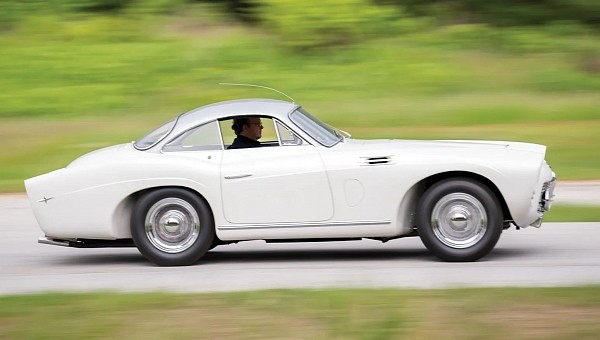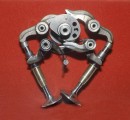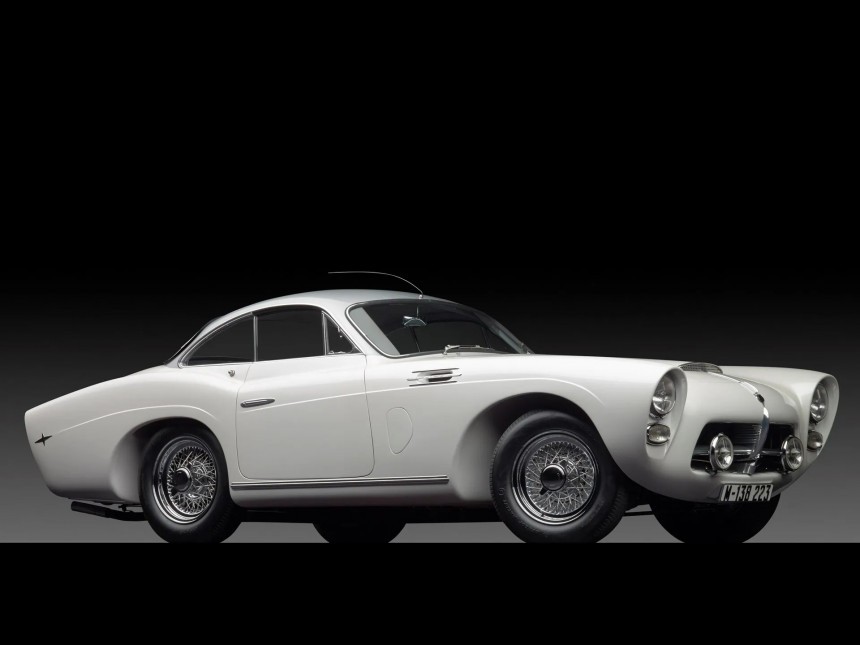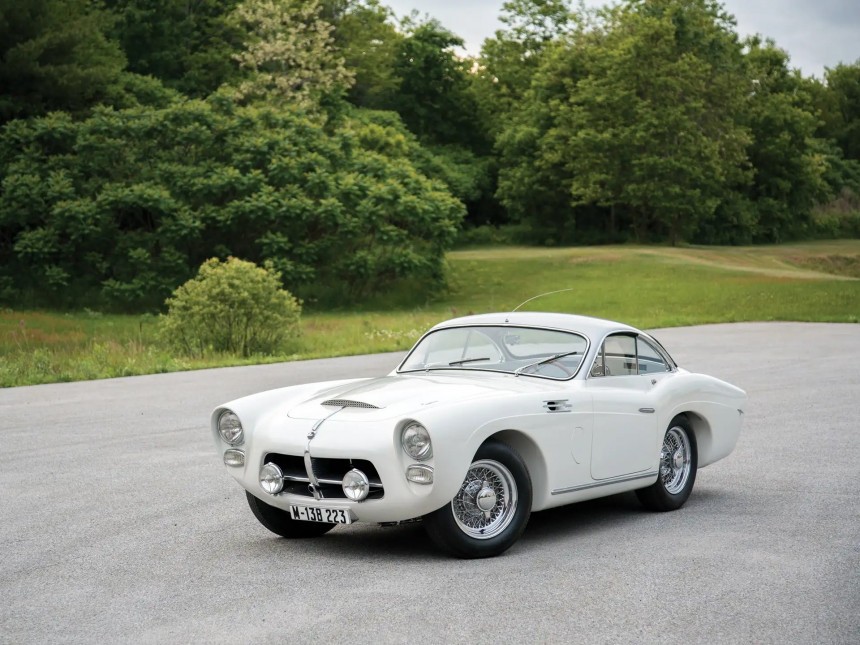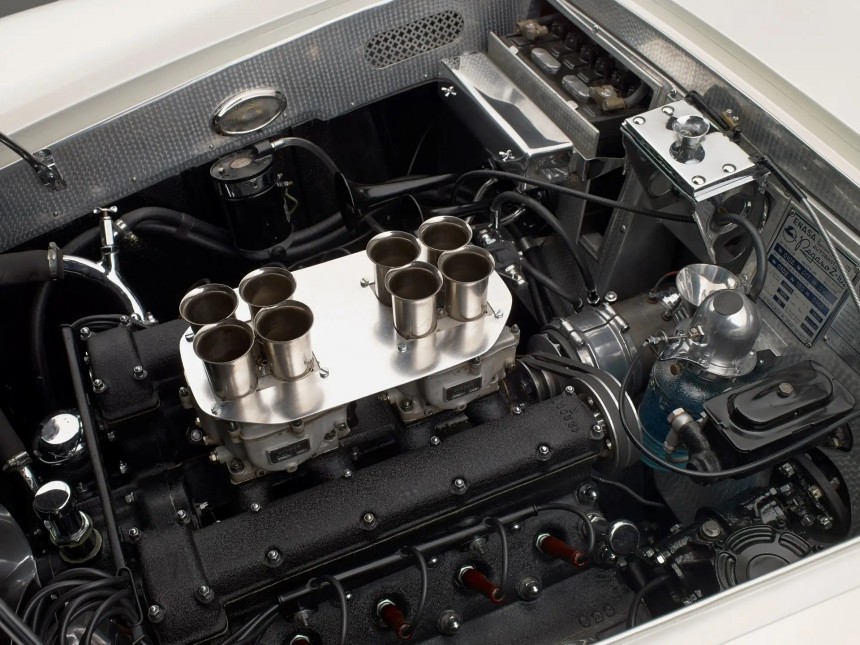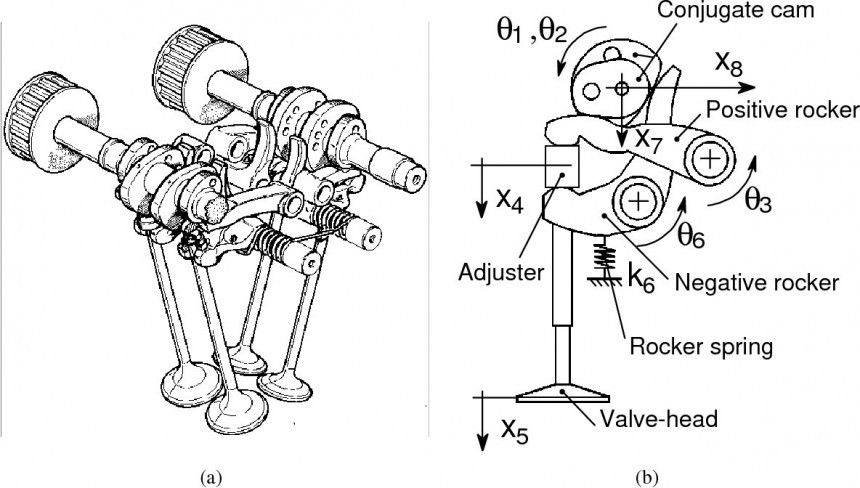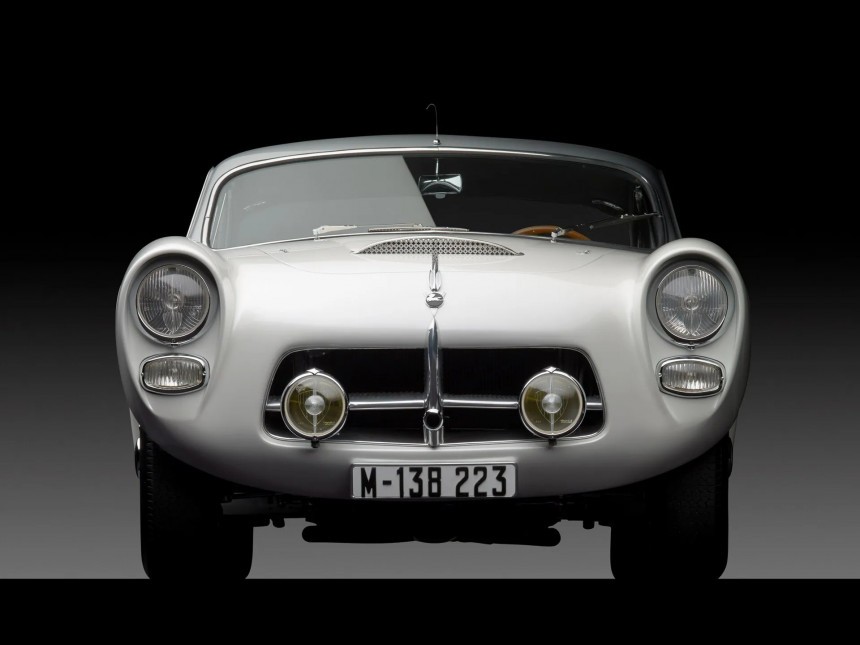Seven decades ago, the young Iberic republic of Spain undertook a daring endeavor and built an automobile. Not just any regular self-propelled wagon, but a sportscar. And not just any typical sportscar, but the fastest one. In the world, that is.
You probably never heard of a Pegaso Z-102 because they were built 1) in the '50s, 2) in Europe, 3) at a rate of 12 a year, and 4) for the indecently rich. For comparison, learn that in 1953, when the car made its US debut at the New York Auto Show, the price tag spelled $15,000. A same-year Corvette – America's new-coming future sweetheart – started at $3,498.
But the Spaniards weren't going against cheap two-seaters with mediocre performance and unconvincing looks. The sportscar from Europe's then-latest automotive nursery was godlike-classy, immorally beautiful, and captivatingly performant.
The video below is self-sufficient proof of this – a 1954 Pegaso Z-102 Berlinetta Series II, found by (whom other than) the cool-car finder Lou Costabile. The Berlinetta was a body crafted by Carrosserie Jacques Saoutchik. This coachbuilding company served many other great piston-crowning names of the pre-war years.
Some of the era's luxury carmakers that appointed the French styling shop are Bugatti, Rolls-Royce, Delahaye, Mercedes-Benz, and Hispano-Suiza. The latter brand has a substantial connection to the Pegasus project. The frames and engines were built in Barcelona, in a former factory of Hispano-Suiza.
The Pegaso was Saoutchik's last major contract as a coachbuilder before his shops went bankrupt and subsequently out of business in 1956. And what a work the French gifted us with! Unmistakable in design language, the high-performance automobile had the best of both worlds: European-inspired looks and American-adored muscle.
Before discussing his last statement, let's briefly scroll through the styling. Does that narrow waist remind you of a particular blonde bombshell of the era? Norma Jean Mortenson was the absolute female sex symbol of the decade, and automobile design language borrowed her name as an eponym for sleek looks.
American gearheads were introduced to the Marilyn-Monroe-shaped automobiles in 1962, when Studebaker's Avanti debuted. Raymond Loewy, an industrial designer (and also French-born), penned the famous "coke-bottle" profile that year.
Saoutchik was eleven years ahead of the Avanti when it contoured the Pegaso Z-102 Berlinetta masterpiece. Just the suitable form for car's ultimate essence – the record-setting firepower. Earlier, I referred to the powerplant as "muscle" for a good reason.
The generally embraced idea is that, in cars, "muscle" is of American origin, with (big) V8s, solid transmissions, high-performance ambitions (please read "fast quarter-miles"), and that's about it. The Pegaso had the necessary punch to complement the looks. A V8 that would become the fastest production car in the world, at one point, at 151 mph (243 kph) – in 1953.
Our hero (chassis 0148) has a 2.8-liter DOHV 32-desmodromic-valve hemi V8 with two four-barrel Weber carburetors. A five-speed manual gearbox with reversed-pattern shifting and a rear-mounted reversed transaxle put the V8 might to the rear wheels. (Ironically, Weber carbs are still manufactured today in Spain).
About that rowdy burbling V8 we see in the video (and worship in secrecy) – let's detail some of its features. 2.8 liters of displacement, that's pretty straightforward. 195 hp (198 ps), 160 lb-ft (217 Nm), 8.8:1 compression ratio.
However, the eight cylinders have dual camshafts for each bank of the vee-carved architecture. Not a standard road car feature, by any means, in that era. The Formula One champion Mercedes-Benz W196 of '54-'55 (and its 1955 LeMans derivative W196S) adopted the same intake-exhaust mechanical solution.
Moreover, although HEMI came to be a monument of American horsepower triumph, the dome heads are far from being born in Detroit. (Sorry, United States of Automobile, that honor, too, belongs to Europe). Out of respect for Mother Mopar, I chose to spell "hemi" to describe the combustion chamber of the Pegaso. The HEMI is – and should forever be – an apostle of the Pentastar.
The Spanish sportscar's cut-sphere heads meant high-efficiency combustion and more room for valves. Hence, four sat above each piston (with sodium-filled exhaust valves), actuated by overhead cams and with desmodromic engineering.
Perhaps the weird word sounds familiar? Desmodromic… Desmosedici has a remarkably close ring to it, doesn't it? The Italian motorcycle company Ducati uses the same distribution system – hence the name for its speed-braving models.
But what are desmodromic valves? In short, springless valves; refer to the gallery for a more detailed explanation. But it's safe to say this type of valve solves high-revving-derived issues, such as valve floating, frequent adjustment, or rapid fatigue. Play the second video for a concise visual tutorial about this interesting engineering aspect.
As if the engine wasn't masterpiece enough, the gearbox – a manual five-speed built by ZF – has a most unusual shift pattern. For a left-hand-drive automobile, first gear is far to the right and down, reverse is above it, and the rest is also depicted in the gallery.
As for the gearbox itself, it is mounted behind the rear axle, beyond the differential – making it a reverse transaxle. This feature, in turn, distributed weight evenly between the front and back, giving a superior ride quality to the expensive exclusive. No two Pegasos are alike, as each was custom-made.
The car in our story was auctioned for a hefty $880,000 in 2016. Three years before that, it made the object of another auction (for a more modest $797,500). This same car was a star at the 1954 Paris Auto Show. It is also one of the five left-hand-drive coupes of the total eighteen Pegaso Z-102 Series II Berlinetta Saoutchik has built bodies for.
The drivetrain is the original one built some seventy years ago, albeit completely redone before current ownership, as the owner himself states. The factory-installed transaxle gears were replaced with heat-treated billet ones. Before being assembled in the drivetrain, the new cogwheels were worn in on a fixture to ensure proper mesh.
Apart from its highly unconventional story (a sportscar built by a military dictatorship regime of a struggling post-war economy from a country with a lesser-known automotive heritage), there's one more tale about the Pegaso.
Its name and emblem – the divine flying stallion of ancient Greek mythological fairytales – were a kick in Ferrari's front bumper. If the "Cavalino Rampante" could stand on its hindquarters for the pride of Italy, its Spanish rival would leave mortal ground altogether and take to the heavens above.
But the Spaniards weren't going against cheap two-seaters with mediocre performance and unconvincing looks. The sportscar from Europe's then-latest automotive nursery was godlike-classy, immorally beautiful, and captivatingly performant.
The video below is self-sufficient proof of this – a 1954 Pegaso Z-102 Berlinetta Series II, found by (whom other than) the cool-car finder Lou Costabile. The Berlinetta was a body crafted by Carrosserie Jacques Saoutchik. This coachbuilding company served many other great piston-crowning names of the pre-war years.
The Pegaso was Saoutchik's last major contract as a coachbuilder before his shops went bankrupt and subsequently out of business in 1956. And what a work the French gifted us with! Unmistakable in design language, the high-performance automobile had the best of both worlds: European-inspired looks and American-adored muscle.
Before discussing his last statement, let's briefly scroll through the styling. Does that narrow waist remind you of a particular blonde bombshell of the era? Norma Jean Mortenson was the absolute female sex symbol of the decade, and automobile design language borrowed her name as an eponym for sleek looks.
Saoutchik was eleven years ahead of the Avanti when it contoured the Pegaso Z-102 Berlinetta masterpiece. Just the suitable form for car's ultimate essence – the record-setting firepower. Earlier, I referred to the powerplant as "muscle" for a good reason.
The generally embraced idea is that, in cars, "muscle" is of American origin, with (big) V8s, solid transmissions, high-performance ambitions (please read "fast quarter-miles"), and that's about it. The Pegaso had the necessary punch to complement the looks. A V8 that would become the fastest production car in the world, at one point, at 151 mph (243 kph) – in 1953.
About that rowdy burbling V8 we see in the video (and worship in secrecy) – let's detail some of its features. 2.8 liters of displacement, that's pretty straightforward. 195 hp (198 ps), 160 lb-ft (217 Nm), 8.8:1 compression ratio.
However, the eight cylinders have dual camshafts for each bank of the vee-carved architecture. Not a standard road car feature, by any means, in that era. The Formula One champion Mercedes-Benz W196 of '54-'55 (and its 1955 LeMans derivative W196S) adopted the same intake-exhaust mechanical solution.
The Spanish sportscar's cut-sphere heads meant high-efficiency combustion and more room for valves. Hence, four sat above each piston (with sodium-filled exhaust valves), actuated by overhead cams and with desmodromic engineering.
Perhaps the weird word sounds familiar? Desmodromic… Desmosedici has a remarkably close ring to it, doesn't it? The Italian motorcycle company Ducati uses the same distribution system – hence the name for its speed-braving models.
As if the engine wasn't masterpiece enough, the gearbox – a manual five-speed built by ZF – has a most unusual shift pattern. For a left-hand-drive automobile, first gear is far to the right and down, reverse is above it, and the rest is also depicted in the gallery.
As for the gearbox itself, it is mounted behind the rear axle, beyond the differential – making it a reverse transaxle. This feature, in turn, distributed weight evenly between the front and back, giving a superior ride quality to the expensive exclusive. No two Pegasos are alike, as each was custom-made.
The drivetrain is the original one built some seventy years ago, albeit completely redone before current ownership, as the owner himself states. The factory-installed transaxle gears were replaced with heat-treated billet ones. Before being assembled in the drivetrain, the new cogwheels were worn in on a fixture to ensure proper mesh.
Apart from its highly unconventional story (a sportscar built by a military dictatorship regime of a struggling post-war economy from a country with a lesser-known automotive heritage), there's one more tale about the Pegaso.
Its name and emblem – the divine flying stallion of ancient Greek mythological fairytales – were a kick in Ferrari's front bumper. If the "Cavalino Rampante" could stand on its hindquarters for the pride of Italy, its Spanish rival would leave mortal ground altogether and take to the heavens above.
